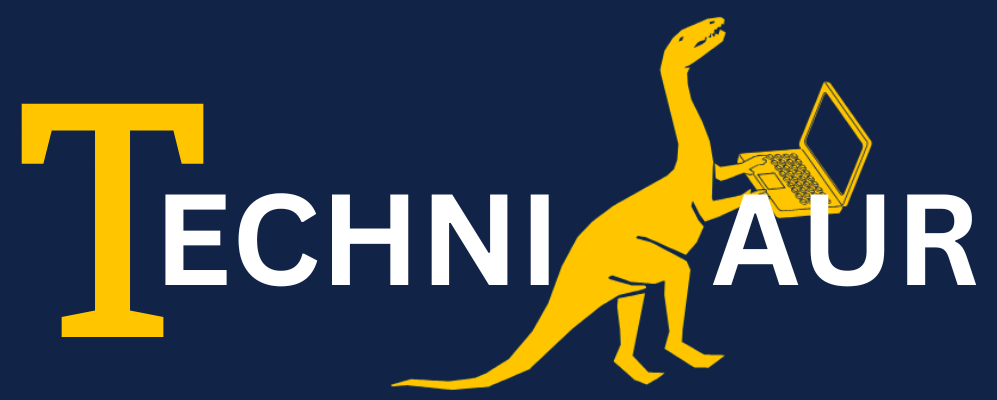How Python Powers AI, Machine Learning, and Data Science If you’ve been anywhere near the tech scene in the last decade, you’ve probably noticed how often one programming language keeps popping up in conversations about artificial intelligence, machine learning, and data science. That language is Python.
Now, that might seem odd at first. Python isn’t the fastest programming language. It wasn’t built specifically for AI. In fact, compared to C++ or Java, it’s a bit slow. So why has it become the beating heart of the AI and data revolution? Well, the answer has a lot to do with its simplicity, versatility, and an ecosystem of powerful libraries that turned Python into the natural choice for researchers, developers, and businesses.
But instead of just giving you the “official” answer, let me walk you through it like we’re chatting over coffee. Because honestly, understanding why Python dominates AI and data science makes you appreciate the language even more.
Why Python Feels Right for AI
The first time I wrote Python code, it felt different. The syntax was so clean it was almost like writing plain English. No curly braces to worry about, no cryptic symbols everywhere—it just worked. That’s a huge deal when you’re dealing with something as complex as neural networks or data pipelines.
When you’re building AI systems, your brain is already juggling abstract math, statistics, and algorithms. The last thing you want is to also wrestle with a programming language that feels like it’s deliberately making things harder. Python removes that friction. It lets you focus on ideas rather than low-level details.
But readability alone wouldn’t have been enough. The real magic is in the libraries and frameworks built on Python. Let’s take a tour through some of the most influential ones.
An Overview of Python’s Key Libraries
NumPy: The Mathematical Backbone
At the core of everything is NumPy. If Python is the body, NumPy is the skeleton. It provides arrays, matrices, and a whole suite of mathematical operations that run way faster than native Python lists. Why? Because under the hood, it uses optimized C code.
If you strip away the fancy machine learning models, AI is still just math—lots of matrix multiplications and linear algebra. NumPy makes that efficient. In fact, many deep learning frameworks, including TensorFlow and PyTorch, rely on NumPy operations. Without it, Python wouldn’t have stood a chance in the data-heavy world of AI.
Pandas: The Data Wrangler
Next up is Pandas, the library that makes data scientists’ lives infinitely easier. Working with raw data is messy—missing values, duplicate entries, weird formats. Pandas gives you powerful data structures like DataFrames that make cleaning and analyzing structured data straightforward.
Imagine you’ve got a dataset with thousands of rows of customer purchase history. With Pandas, you can filter, group, and summarize the data with just a few lines of code. Without it, you’d be stuck writing tedious loops.
TensorFlow: The Deep Learning Powerhouse
When people hear “AI,” many immediately think of deep learning—and that’s where TensorFlow shines. Created by Google, TensorFlow allows developers to build and train neural networks that can handle everything from image recognition to natural language processing.
It’s highly scalable too. You can train a small model on your laptop and then deploy a massive version across hundreds of GPUs in a data center. That kind of flexibility is why companies like Netflix, Uber, and Google itself use TensorFlow for production systems.
Scikit-Learn: The Machine Learning Toolbox
For more traditional machine learning tasks—classification, regression, clustering—Scikit-Learn is the go-to library. Think of it as the Swiss Army knife for ML. You can try out different algorithms quickly and compare results without needing to write everything from scratch.
For instance, if you want to predict house prices based on features like square footage and location, Scikit-Learn can help you build and test models in just a few lines of code. It’s incredibly beginner-friendly but powerful enough for serious work.
Visualization: Matplotlib and Seaborn
Data science isn’t just about crunching numbers—it’s about understanding them. Matplotlib and Seaborn help turn raw data into visual stories. Whether it’s a simple line chart or a complex heatmap, these libraries let you see trends and patterns that aren’t obvious in spreadsheets.
Visualization is often the step where “data” turns into “insight.” Without it, data science would feel like staring at endless tables of numbers.

Use Cases: Where Python Really Shows Its Strength
Natural Language Processing (NLP)
Have you ever typed into a chatbot or seen your phone autocomplete a sentence? That’s NLP in action. Python has libraries like NLTK, SpaCy, and TensorFlow that make processing human language possible.
Take sentiment analysis, for example. Companies use Python to analyze tweets or customer reviews to figure out if people are happy, angry, or indifferent. It sounds simple, but think about the nuance in language—sarcasm, slang, cultural differences. Python helps researchers tackle those complexities.
Computer Vision
From self-driving cars detecting pedestrians to hospitals using AI to read medical scans, computer vision is one of the most transformative fields. Python’s OpenCV library, combined with TensorFlow or PyTorch, makes it possible to build these systems.
I once read about a project where Python was used to detect diseases in plants just by analyzing photos of leaves. Now, imagine scaling that up across entire farms. The potential is huge.
Predictive Analytics for Business
Companies love predictive models because they turn historical data into future insights. Using Python libraries like Pandas and Scikit-Learn, businesses forecast sales, predict inventory needs, and even anticipate customer churn.
Picture a subscription company noticing that certain patterns in user activity usually mean a customer is about to cancel. With Python, they can act early—maybe offering a discount or a personalized email—to keep that customer.
Recommendation Systems
If you’ve ever wondered how Netflix always seems to know what you want to watch next, thank Python. Recommendation systems powered by TensorFlow and Scikit-Learn crunch enormous amounts of user data to suggest products, shows, or songs tailored to individual tastes.
These aren’t just nice-to-have features—they drive revenue. Amazon, Spotify, YouTube… they all rely heavily on recommendation engines.
Healthcare and Life Sciences
Healthcare is one of the most exciting areas for AI. Python is used to build models that detect diseases earlier, personalize treatments, or analyze genetic data. With TensorFlow, researchers are training networks to spot tumors in X-rays or predict the likelihood of heart disease based on patient history.
This isn’t just about efficiency—it’s about saving lives.
Why Python Over Other Languages?
At this point, it’s fair to ask: why Python, and not R, Julia, or Java?
- R is fantastic for statistics, but it struggles to scale to large, production-level AI systems.
- Julia is fast and great for numerical work, but its ecosystem is still growing. It doesn’t yet have the massive community or mature libraries Python enjoys.
- Java has speed and reliability, but writing in it feels heavy compared to Python’s sleek, readable syntax.
Python hits a rare balance: it’s simple enough for beginners, flexible enough for experimentation, and powerful enough—thanks to TensorFlow, Pandas, and others—to handle production workloads. That trifecta is hard to beat.
The Community Factor
One thing you can’t overlook is Python’s community. It’s enormous and incredibly active. If you get stuck on a problem, chances are someone else has already asked the same question on Stack Overflow.
There are endless tutorials, GitHub projects, and forums dedicated to Python in AI and data science. This collective knowledge lowers the barrier to entry. It means a student in a small town can learn machine learning alongside researchers at top universities.
That democratization is part of why AI has spread so widely in the last decade.
Challenges Python Still Faces
Of course, Python isn’t perfect. Its biggest drawback is speed. Because it’s an interpreted language, it’s slower than compiled ones like C++ or Java. That’s why so many libraries are actually written in C or Cython under the hood while exposing Python interfaces.
Scalability is another challenge. For highly concurrent or real-time systems, Python can struggle. Some companies end up rewriting critical parts of their codebase in faster languages once the prototype stage is over.
But here’s the thing: Python makes prototyping so easy that these trade-offs are often worth it. You can test ideas quickly, and if you hit performance bottlenecks later, you can optimize then.
Python’s Accessibility
What I find fascinating is how Python has become the first language for so many people. Its readability makes it far less intimidating than, say, C++. Even people without a traditional computer science background—statisticians, biologists, business analysts—can pick it up and start experimenting with data.
Entire bootcamps and university courses now use Python exclusively to teach AI and data science. That’s a huge shift from just a decade ago, when R or MATLAB dominated classrooms.
A Personal Note
I’ll be honest: when I first dipped my toes into machine learning, it felt impossible. Like, you needed a PhD in math to even understand the basics. But Python changed that perception. With libraries like Scikit-Learn, I could train a simple model in just a few lines of code. It wasn’t world-changing AI, but it worked.
And that’s the beauty of Python—it puts these powerful tools in the hands of regular people. It democratizes access to technology that once felt out of reach.
The Future of Python in AI and Data Science
Will Python always dominate? Hard to say. Technology moves fast, and there’s always the chance a new language could rise to replace it. But right now, Python’s combination of simplicity, power, and community support makes it the clear leader.
Even in emerging fields like quantum computing, researchers are building Python wrappers to make complex systems easier to use. That tells me Python isn’t going away anytime soon.
Final Thoughts
So, how exactly does Python power AI, machine learning, and data science? By being simple enough for beginners, versatile enough for experimentation, and powerful enough—thanks to libraries like Pandas, NumPy, TensorFlow, and Scikit-Learn—to build real-world solutions. From chatbots to self-driving cars, from healthcare to recommendation engines, Python is everywhere. It’s not perfect, but it’s accessible, adaptable, and supported by one of the largest programming communities in the world. If you’ve ever been curious about AI or data science, learning Python might just be the best first step. Who knows? The next groundbreaking idea in AI could start with your very first line of Python code.
Frequently Asked Questions (FAQ)
1. Why is Python popular in AI and machine learning?
Python is popular because it’s simple, readable, and supported by powerful libraries like Pandas, NumPy, and TensorFlow. Developers can quickly prototype ideas, experiment with algorithms, and scale solutions. Its huge community also means easy access to tutorials, forums, and open-source projects, making AI more accessible than ever.
2. Which Python libraries are best for data science?
The most widely used Python libraries in data science include Pandas for data manipulation, NumPy for numerical computing, Matplotlib and Seaborn for visualization, and Scikit-Learn for machine learning. TensorFlow and PyTorch are also essential for deep learning tasks, making Python a complete toolkit for data-driven projects.
3. Can beginners use Python for AI and ML?
Absolutely. Python’s straightforward syntax makes it beginner-friendly, even for people without a programming background. With tools like Scikit-Learn, you can build simple machine learning models in just a few lines of code. Many free tutorials and resources online also help beginners start exploring AI and data science.
4. Is Python fast enough for AI applications?
While Python isn’t the fastest language, it’s fast enough for most AI tasks thanks to optimized libraries written in C or C++. For heavy workloads, frameworks like TensorFlow handle computations efficiently. In many cases, the simplicity of Python outweighs performance concerns, especially during research and prototyping.
5. What real-world applications use Python in AI?
Python powers countless AI applications—chatbots, recommendation engines, self-driving cars, medical imaging, and predictive analytics in business. For example, Netflix uses Python for recommendations, healthcare researchers use it for disease detection, and financial firms rely on it for fraud detection. Its versatility makes Python invaluable across industries.








